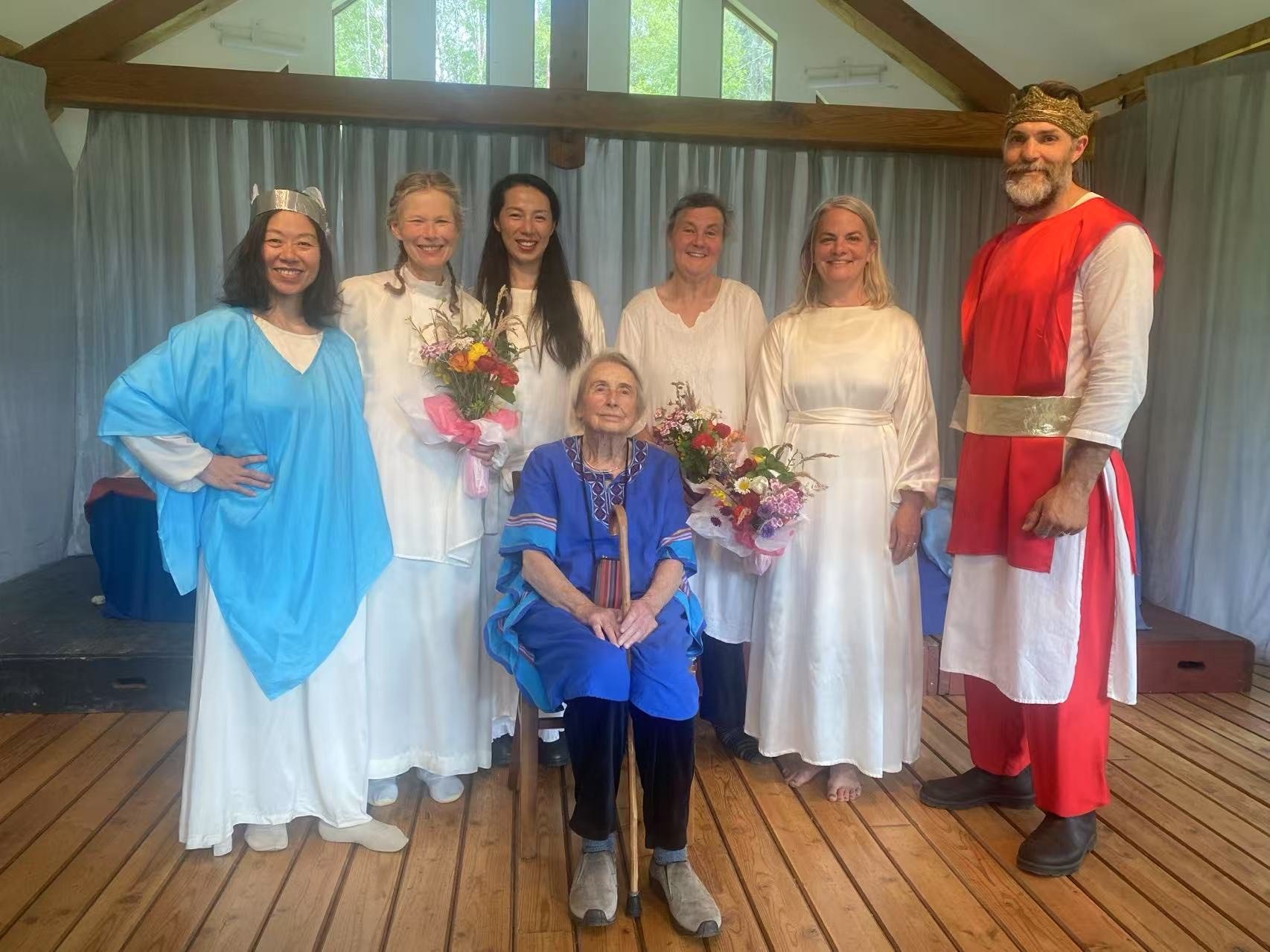Creative Corner:
WAPASA members Adola McWilliams and Hannah Hidson, from Duncan, B.C., created a Puppet Show and Play based on the medieveal story of Lohengrin!
This was performed in the Summer of 2024 at Glenora Farm Camphill on Vancouver Island, Canada.
The epic saga of Lohengrin was originally included in the book called Parsival, which was written in the early 1200's. Wolfram Von Eschenbach originally told or sang the tale for a large gathering of bards in a great castle earlier and penned it later.
Initially, when I was working with Adola on her biographical puppet show which was performed for our community, Adola told me that the story of Lohengrin was very significant for her. It was then, I decided it would be a rich experience for the community to make it come alive off the page and onto the stage. I immediately could see it in the form of a theatre production combining actors and puppets. The puppets would play the “soul/ spirit” scenes which required larger than life, ‘epic like’ scenes and the actors would act out the dramatic scenes. The story would unfold as a puppet show, with the puppeteers (dressed in their puppet character’s costume) switching to Actors and acting out the dramatic scenes, to deepen the potent drama of the tale, and to engage the audience in an inner rich experience.
During the performance, the music contributed to the great beauty of the play.
A pianist, trumpeter, harpist and flautist played for the performances. We also had a eurythmist for the puppet scene where “Elsa” the main character, has a vision of the knight Lohengrin in her dream. Lohengrin and then she, played Lohengrin in full costume for the acting scenes. We used the original Lonengrin theme from Richard Wagner’s opera among many other pieces.
Here are Adola McWilliam's words about Lohengrin: Continue here:
If puppets are an important means of expression of one’s higher impulses than one will use them to share one’s deepest heart impulses. Hence it was my dream to perform Lohengrin in puppets. So here is my personal, historical background.
As far as I can remember back to my earliest childhood, I was always deeply connected to Swans. Every single day my sister and I walked to the nearby canal, on the outskirts of Amsterdam, with our mother or our nanny to feed the swans.
Later in life, when I went to the Waldorf high school, we were told the story of Lohengrin, the knight of the swan. This legend, as also the legend of Parcival, became my then Spiritual contents.
Later as a young adult, when I lived in Camphill and had begun my intense study of Caspar Hauser, I realized that Caspar was the last person to still become a member of the knighthood of the Swan. For me, the swan that brings Lohengrin in a little boat across the ocean to help the maiden Elsa of Brabant , represents a dead knight. The ocean they traverse to get there is a journey from the Spiritual world.
When my husband Charles died, I continued strongly connecting to him and I became a member of the knighthood of the swan. I worked together with someone on the other side; my swan.
Many communities along the river Rhine, in Holland, were all inspired by THE SWAN.
This for me was also a connection to the Camphill Community.
The knights of the swan are mediators here on earth, between warring parties.
Just thinking back again about the final performance ,but also many of the rehearsals, I feel and think of it as a mighty performance. And the use of the two art forms, clearly brings out the different sides of the story content.
Adola McWilliams and Hannah Hidson





